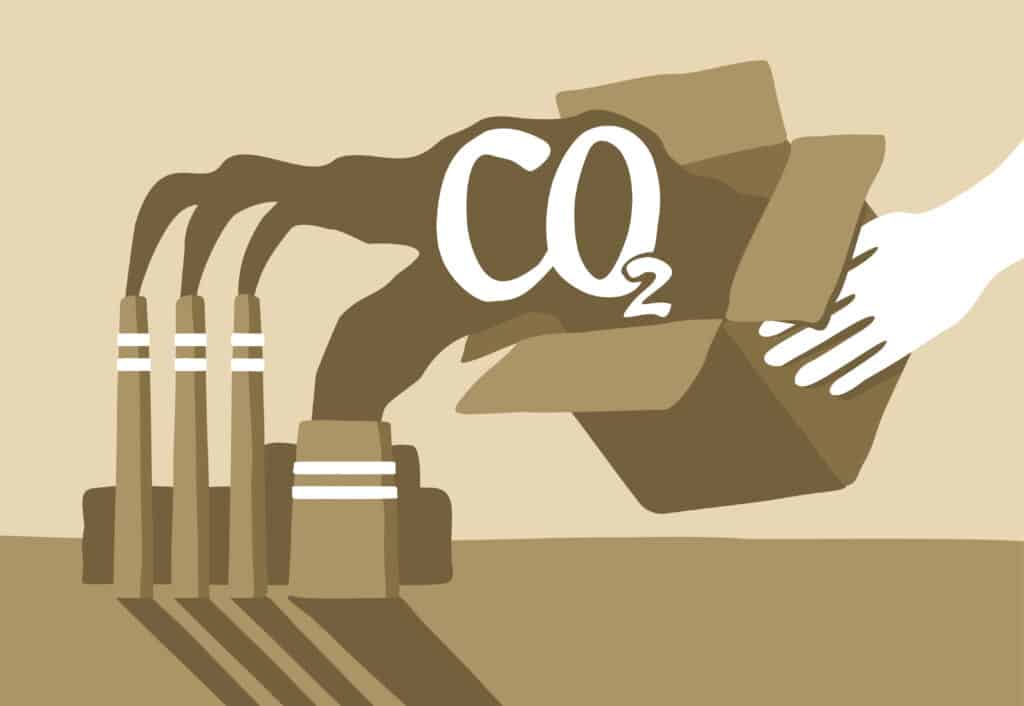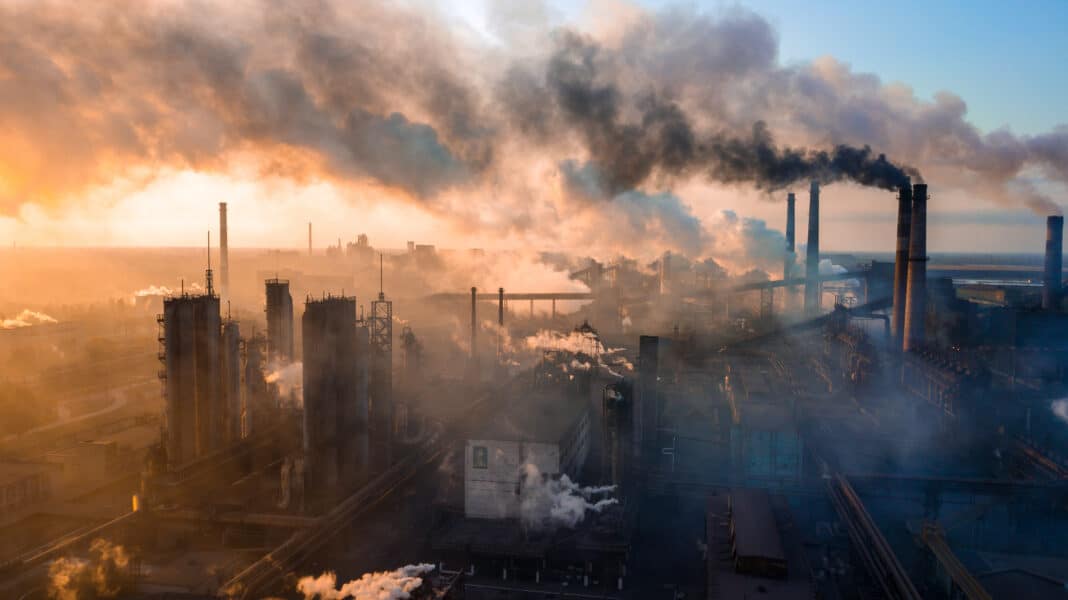#1 We have the ability to capture enough CO2 to meet the goals of the Paris Agreement.
True about statement #1…
The various climate change mitigation scenarios incorporate CO2 capture, storage and utilisation (CCUS) technologies.
In its 2050 carbon neutrality scenario1 projects that 7.6 Gt of CO2 will be captured each year by 2050. As for the Intergovernmental Panel on Climate Change (IPCC), in its sixth report published in April 20222, it emphasizes: « Mitigation strategies to limit warming to 1.5°C or 2°C include the transition to fossil fuels associated with CO2 capture and storage […], and the deployment of CO2 capture methods [editor’s note: such as direct atmospheric capture] to offset residual emissions. »
However, it must be kept in mind that CO2 capture is only part of the solution: 37.1 Gt of fossil CO2 were emitted in 20213. A range of measures must be implemented to mitigate climate change: agriculture, forestry and the oceans all play, in their own way, a very important role in the global carbon balance.
False about statement #1…
The targets are well above current CO2 capture and recovery capacities.
The IEA estimates that 4 Gt of CO2/year must be captured by 2035 and 7.6 Gt by 2050. To date, only 35 commercial facilities are using CCUS. These are pilot projects and their capture capacities are extremely small: less than 0.05 Gt of CO2 per year4.
The IEA estimates that 4 Gt of CO2/year must be captured by 2035 and 7.6 Gt by 2050.
The industry has yet to be developed, and the IEA’s targets are out of reach due to the investments required, particularly in high-emitting countries like China, India and the United States. The ramp-up will require the installation of new facilities, as well as the very costly renovation of existing units (retrofitting).
Uncertain about statement #1…
The amount of water and energy required for CCUS could limit the process.
Let’s look at the impact of installing a CO2 capture unit on an existing coal plant5. Assuming an electrical efficiency of 46% for a production capacity of 500 MWe, the efficiency loss in the ideal case would be at least 3.8%. In reality, this loss is more like 10%, or an efficiency after capture of 36%. Two-thirds of the energy consumed is for capture, and the remaining third for compression of the CO2. To this must be added the energy required for transport and injection: keeping the CO2 in a supercritical or liquefied state requires a lot of energy.
As for water, current processes generate a lot of heat. The water needed to cool the installation will increase the consumption of this resource.
#2 It is already possible to capture and recycle CO2 emitted by human activities.
True about statement #2…
Many sectors are already using CCUS technologies.
CO2 capture technologies have been around since the 1970s and are used for enhanced oil recovery and natural gas processing. However, in this context, the CO2 is not recovered but released into the atmosphere. 35 commercial industrial facilities use CCSUs to capture and recover CO2, for example by treating flue gases with amine chemistry.
False about statement #2…
The recovery or storage channels have yet to be developed.
To date, of the 440 Mt of CO2 captured each year, 230 Mt of CO2 are used mainly for the production of urea for fertilization (130 million tons) and enhanced oil recovery (80 million tons)6. We cannot imagine recovering billions of tons of CO2 in this way.

Regarding storage, some pilot projects are already experimenting with injection into former gas fields. But the development of this sector will have to deal with questions of social acceptability. It is important to store as close as possible to the capture site to limit costs: for example, in France, in the Paris Basin east of Paris or in the vicinity of Pau.
Uncertain about statement #2…
The value of direct air capture (DAC), a process that covers diffuse emissions (heating, cars, etc.), remains a subject of debate.
There are currently 18 DAC facilities in the world (Europe, USA and Canada) capturing almost 0.01 Mt of CO2 each year. These small facilities capture CO2 for direct use, such as in the manufacture of soft drinks. Only two of them store CO2 in geological formations7.
The global concentration of CO2 in the atmosphere has increased from 277 ppm before the industrial era to 417 ppm in 20228. With DAC, we would have to treat gigantic volumes of air to reach pre-industrial era concentrations! I believe that the necessary investments, operating costs and energy required make DAC a finishing option: the priority is to capture CO2 from the most emitting industries.
#3 Long-term CO2 storage is risky.
True about statement #3…
The long-term permeability of deep saline aquifers is unknown.
Deep saline aquifers are specialised reservoirs for CO2: they are evenly distributed over the surface of the globe and therefore limit the transport of CO2. Moreover, they offer a very large storage potential, ranging from 400 to 10,000 Gt9. In these reservoirs, the CO2 would be dissolved in water for storage, but uncertainties remain as to the stability of the reservoir, particularly in terms of geochemical risks. Indeed, the addition of CO2 will acidify the water, which could cause chemical reactions with the host rock and weaken the reservoir.
False about statement #3…
Older hydrocarbon reservoirs appear to be more stable over time.
Older hydrocarbon reservoirs are among the other reservoirs being studied for CO2 storage. While they have the disadvantage of having a less interesting geographical distribution, they have been proven to be watertight for millions of years as hydrocarbon reservoirs (gas, coal, or oil). The geomechanical and geochemical risks associated with CO2 injection must nevertheless be better understood: this is currently the subject of demonstrators in the United States, Canada, Algeria and Norway.
Uncertain about statement #3…
New ways of recovery could make it possible to do away with CO2 storage in part.
As we have already mentioned, it is also possible to recover captured CO2. But the channels remain limited today: it is certain that we cannot increase fertiliser production indefinitely! However, many well-known processes could enable CO2 to be recovered in other ways, some of which have already been developed on an industrial scale in the past. For example, thanks to a reaction between hydrogen and CO2, many synthetic fuels can be produced. CO2 can also be used to produce plastics or mineral carbonates for building materials. The problem is that these processes are, at this stage, more expensive than those based on fossil materials such as oil.







